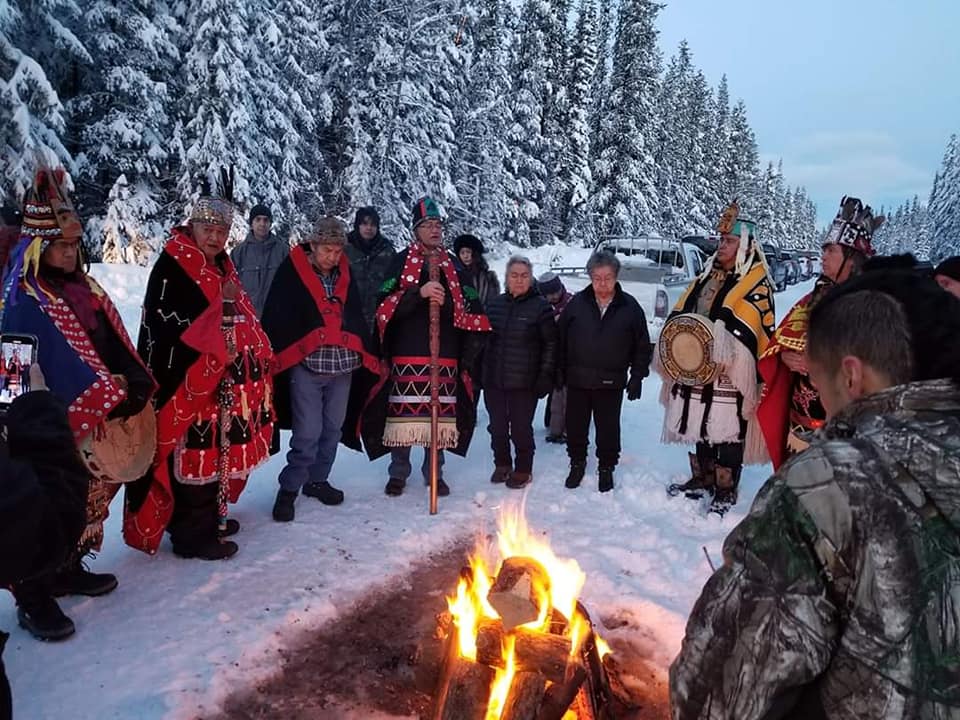 |
| Image courtesy IVJ Canada https://www.ijvcanada.org/canadian-jews-stand-with-wetsuweten-to-repair-the-world-we-must-decolonize/ |
It was a full four and something years of travel, reading and writing. A LOT of travel and reading and writing. But York University is or was then, thirty years ago (my gosh) a peculiarly innovative institution, and my incredible cadre of professors provided us with ample opportunity, fueled with inspiration to take on learning approaches beyond just the text book and typewriter. (yes I actually used a typewriter and was very proud when I got an electric one with the automatic corrector tape function!) I did a summer field school at the Seed Barker site with Dr. Mima Capches investigating an early Iroquois village right across the street from Canada's largest theme park. I designed and implemented a project engaging local youth in research on identity, multiculturalism and the experience of being an immigrant. My favorite homework assignment was the time Dr. Elizabeth Graham sent us to Upper Canada brewing company for a five dimensional learning experience now known as a tasting tour. Our objective was to gain insights into the history of brewed beverages as part of our early civilizations course. My most impactful course was with Sadie Buck and Amos Key learning about the history of the land on which my university stands, through theory and practice of Haudenosaunee art and culture. We learned about Handsome Lake, the Mush House, and the incredible beauty of filling a room with our voices blending as one. We also learned what happened to the hereditary form of governance (on which the United States model of democracy is based) when the executive branch of the federal government seized all articles, put all the leaders in jail, and replaced them with leaders chosen not by the people but by the federal government. This happened in 1924. But the project that I really enjoyed the most of any of my many assignments was my paper on the legal history of the Wetsuweten Delgamuuk case, which at that time, was on its way to be heard by the Supreme Court. These were the days when computers were new and the internet was not yet available for public use. The only place I could find information regarding the case history on the Delgamuuk case was inside the beautiful glass enclosure of the Osgoode Hall Law Library. It was open to anyone. As long as you did all your research on site. I spent hours, days even, pouring over notes and transcripts, quotes, stories all entered into the record of a case that, in its beginnings, was establishing the precedent that oral history, indigenous knowledge, could be entered as evidence in a case that in the end established that aboriginal title, ownership and rights to the land have existed in perpetuity and can not be extinguished by England, Canada or any other corporate interest that has subsequently asserted ownership.
I am by far no lawyer, and my intent both then and now is to delve into the treasures of the legal history to bring to light tangible evidence of the basic truth that elders and traditional knowledge learners already know all over the continent: that our oral history, our community knowledge and the practices that ensure that knowledge is transmitted from one generation to the next, our traditional forms of governance, education, medicine and policing are important. They contain truths that are essential for a full understanding of our place in the world and our responsibility as scientists and protectors of our land, water, resources and relationships. I hope one day I will re-find that paper, I know I have it somewhere, in those 1990 files filled with the sweat, tears and dreams of a teenage cultural anthropologist, maybe it's there, right alongside that Roger Keesing textbook... My point, then and now, is to say, wake up. Look at the facts. We are all here together. And we need to follow the law but we also need to open up our minds and hearts to the natural law that is swirling around us, reminding us every moment of every day who we are, and what we must do to fulfill our role in our families, communities and indeed, the universe.
Let's all #StandUP. Stand together. #AllEyesOnWetsuweten!! Protect each other. And on this 52nd year since the death of the revered Martin Luther King Jr, in the spirit of his quote "injustice anywhere is a threat to justice everywhere," let's build a path to a future where we leave the things that don't serve us ALL behind.
Tiahui!!
Tara.



No comments:
Post a Comment